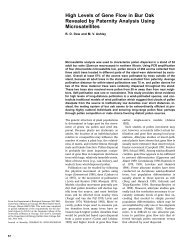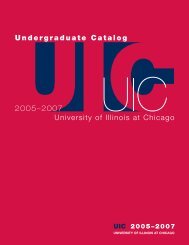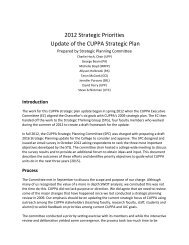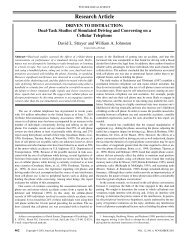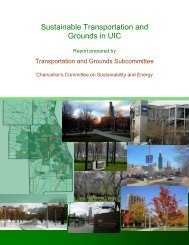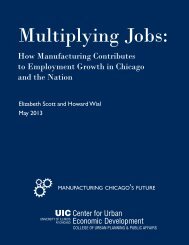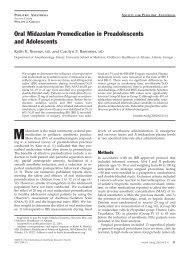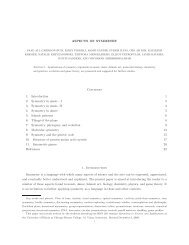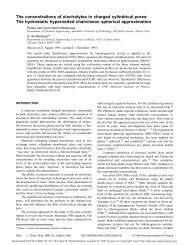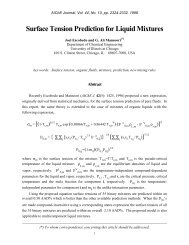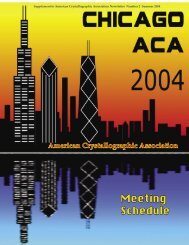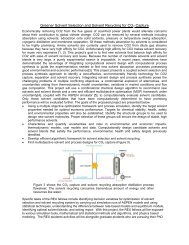Appendix C: - University of Illinois at Chicago
Appendix C: - University of Illinois at Chicago
Appendix C: - University of Illinois at Chicago
Create successful ePaper yourself
Turn your PDF publications into a flip-book with our unique Google optimized e-Paper software.
<strong>Illinois</strong> St<strong>at</strong>e W<strong>at</strong>er Survey - W<strong>at</strong>ershed Science Section<br />
VC SOP No. I<br />
Origin<strong>at</strong>ion D<strong>at</strong>e: 2/02<br />
Version: 1.2, 5/4/2004. Page 6<strong>of</strong>6<br />
STANDARD OPERATING PROCEDURE FOR THE COLLECTION OF SEDIMENT CORES<br />
USING THE ROSSFELDER P-3C VIBROCORE<br />
Requirements for the transport<strong>at</strong>ion and storage Of Collected cores will<br />
vary depending on the intended uses or analyses. The cores as collected<br />
are capped, labeled and sealed. There is limited chance for reordering <strong>of</strong><br />
the core str<strong>at</strong>igraphy when the core tube has been properly cut and<br />
capped so there i's no requirement th<strong>at</strong> the core remain upright. In<br />
addition, while being transported on the bo<strong>at</strong> the core tubes are placed<br />
within storage tubes constructed <strong>of</strong> schedule 40 PVC equipped with end<br />
caps. Since the tubes are completely enclosed there is no chance for<br />
distortion <strong>of</strong> the core due to flexing <strong>of</strong> the sample. When core retrieval is<br />
<strong>at</strong> or near 1 00%, core sample weights can approach 100 lbs. Care should<br />
be taken when handling samples to avoid injury and to avoid any flexing<br />
<strong>of</strong> the core sample to minimize any disturbance to the sample. Since<br />
cores commonly approach 10 feet in length, a vehicle capable <strong>of</strong><br />
transporting this size m<strong>at</strong>erial must be available.<br />
Core samples by the n<strong>at</strong>ure <strong>of</strong> the collection technique limit exposure <strong>of</strong><br />
the sample to <strong>at</strong>mospheric oxygen and possible oxid<strong>at</strong>ion <strong>of</strong> selected<br />
chemical constituents. If temper<strong>at</strong>ure is an important consider<strong>at</strong>ion thenr<br />
it may become necessary for samples to be immedi<strong>at</strong>ely transported to a<br />
cold storage facility or sub-sampling may be required on site with<br />
appropri<strong>at</strong>e storage <strong>of</strong> sub-samples. It is important th<strong>at</strong> the plan <strong>of</strong> study<br />
for chemical analysis be clearly defined as constituents have specific<br />
requirements for holding times, temper<strong>at</strong>ure and m<strong>at</strong>erial in which the<br />
sample is stored. Requirements for the storage and manipul<strong>at</strong>ion <strong>of</strong><br />
sediment samples can be found in such reference m<strong>at</strong>erials as United<br />
St<strong>at</strong>es Environmental Protection Agency document EPA-823-B3-0l1-002<br />
and the 2000 ASTM Standards on Environmental Sampling, Vol. 11.05.<br />
UNITED ANALTIMCAL SERVICES, INC.<br />
Page 31



